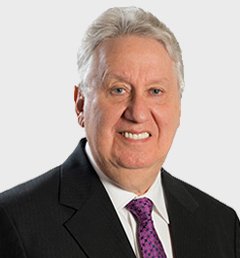The law is influx on this point. The author would not be surprised if within a year that the courts’ views will shift again.
The courts continue to throw a substantive resources at a problem that defies solution, namely the alienation between child and parent following separation.
When the whole of a family is torn apart, the ragged edges of the division chew up emotions, goodwill and family cohesion. Scars are left on all concerned, including the children.
Those scars can leave for various reasons difficulties in a continuing relationship between parent and child. The trust that the child had in the family unit is completely disturbed and at times children, who can be very moralistic and judgmental,will find one parent wanting. At times, with the prompting of one parent or another, the children may have extremely strained or completely alienated relationships from one of their parents.
This leads to finger pointing. Is it alienation on the part of the custodial parent or as often responded is the alienation actually caused by the other parent’s conduct?Is it alienation or is it estrangement?
Extremely difficulty to rectify. The courts are driven by what is in the child’s best interest and the primary belief that the child should have a strong relationship with both parents for their sense of self-worth. One clumsy solution is reconciliation counseling. The concept is a multi-day therapy intervention program such as Families Moving Forward. This is a Toronto based program that attempts to repair relationships where there has been alienation.
This is an expensive process and its results are uncertain. The question is whether or not the court has the authority to force a parent to attend such a program. The decisions are all over the map. A senior judge in Thunder Bay, D.C. Shaw in Barrett vs. Huver felt that there was limited authority for the court to order attendance and participation inreconciliation counseling. In another decision E.T. vs. L.D., a court of equal seniority held a contrary view. In the Williamson case of the British Court of Appeal it felt that only with expert evidence would the court order family reunification therapy. We also have Justice Jarvis’ decision in Testani, who felt that there was such jurisdiction within the court. The Ontario Court of Appeal weighed in on inKaplanispointing out the absence of any specificlegislative authority. However, there remainsthe courts inherent jurisdiction, as parenspatriae, also known as the court remaining as the ultimate parent of all children within its jurisdiction.
Another wrinkle is whether or not participation in a reconciliation therapy program is a medical treatment, which requires one to consent to under the Health Care Consent Act, Section 10.
We conclude with now retired Justice Quinn, whom in this author’s view is the Canadian Lord Denning. For those who still have all of their hair and eye sight, I explain who Lord Denning was. Lord Denning was a senior English judge, famous for broadening the law in many different areas and writing insightful and ground breaking decisions. Lord Denning had an almost cult following amongst lawyers throughout the Commonwealth. While Justice Quinn does not enjoy similar fame, his numerous illuminating decisions especially in the area of family law are legendary. Justice Quinn in the Brunie decision, pointed out the limitation of the courts in dealing with parties in high conflict custodial and access problems. “The function of family court is not change people, but to dispose of their disputes at a given point in time. I preside over a court not a church”.
If I may paraphrase Justice Quinn, the judicial system is severely hobbled in dealing with human problems of desire, conduct and goodwill. It is good at moving money around, not so good in adjusting one’s soul and temperament.













